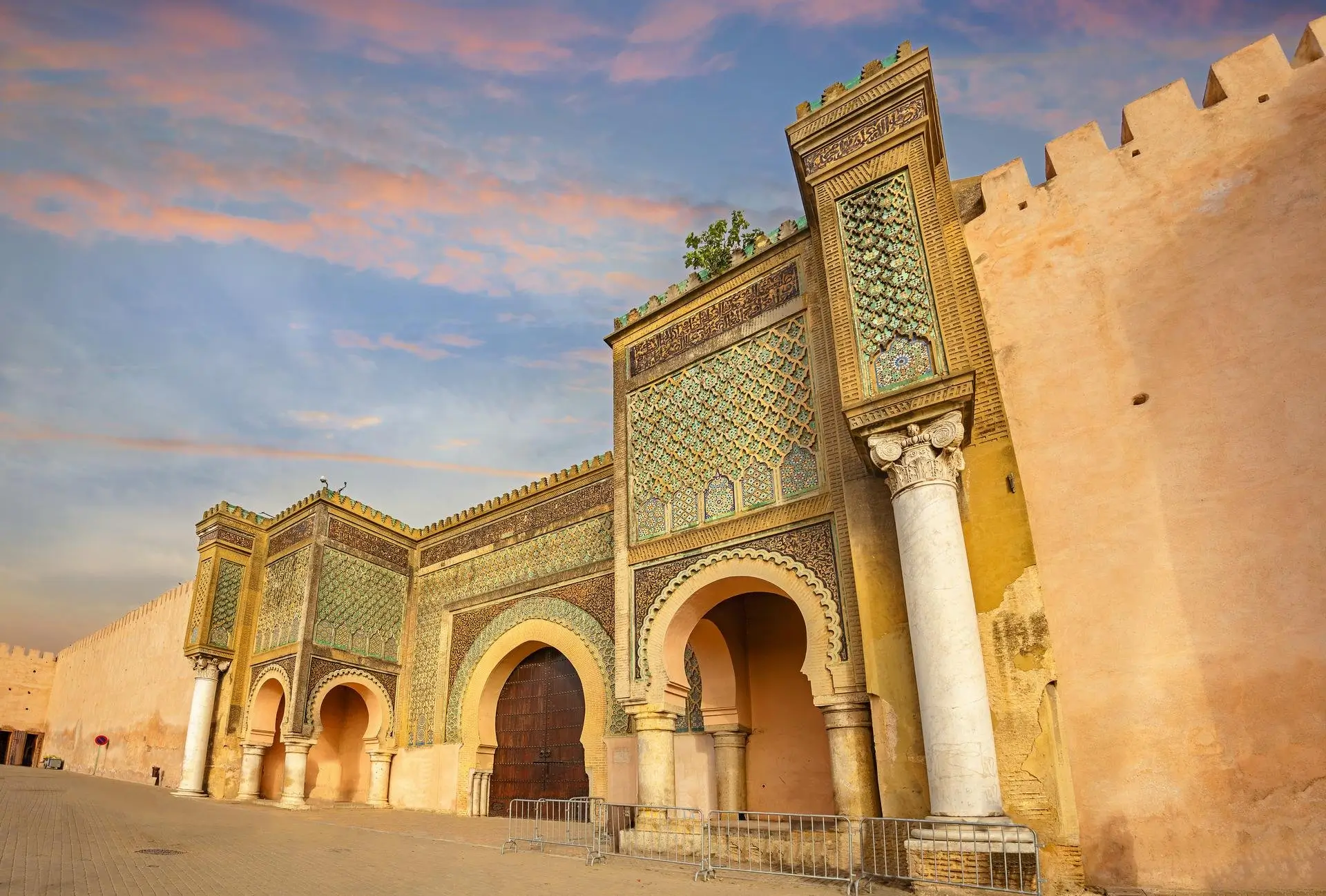While Marrakech dazzles with its energy and the Sahara mesmerizes with its scale, the true soul of Morocco's history resides in its Imperial Cities. Among them, Fes and Meknes stand as timeless testaments to the country's rich past, offering a travel experience that feels like stepping back centuries. A Morocco tour is incomplete without delving into the labyrinthine alleys, magnificent palaces, and vibrant spiritual centers of these captivating cities.
Discovering Fes: The Spiritual and Cultural Capital
Often called the cultural and spiritual heart of Morocco, Fes is a city that engages all your senses. It is home to the world's oldest university and one of its most intricate and well-preserved medieval old towns. The sheer authenticity of Fes is its greatest charm; it's a living, breathing city where ancient traditions are still a part of daily life. The list of Fes attractions is long, but the greatest of them all is the city itself.
Getting Lost in the Fes el-Bali Medina (UNESCO World Heritage Site)
The Fes el-Bali, the city's old medina, is an intoxicating maze of over 9,000 alleyways, where cars cannot enter and goods are still transported by donkey. This is not just a tourist site; it's a bustling community. As you wander, you'll hear the clang of coppersmiths, smell the rich aroma of spices and leather, and see artisans practicing centuries-old crafts. The best way to experience it is to simply get lost. Every turn reveals a new sight: a hidden courtyard, a beautifully carved fountain, or a local bakery pulling fresh bread from a communal oven. The main thoroughfares, Tala'a Kebira and Tala'a Seghira, are a good starting point, but the real magic lies in the narrow derbs (alleys) that branch off them.

The Iconic Chouara Tannery: A Feast for the Senses
No list of things to do in Fes is complete without a visit to the Chouara Tannery. This iconic site has been in operation for over a thousand years, using the same traditional methods to process animal hides. From the terraces of the surrounding leather shops, you can watch the workers in a kaleidoscope of stone vats filled with natural dyes. The sight is unforgettable, and so is the smell! Shopkeepers will offer you a sprig of mint to hold to your nose, which is highly recommended. It’s a powerful, raw, and authentic Moroccan experience.
Architectural Marvels: Medersas and Museums
Fes is renowned for its stunning Islamic architecture. The Medersa Bou Inania and Al-Attarine Madrasa are two exquisite examples of Marinid-dynasty schools, covered in intricate zellij tilework, carved plaster, and beautiful cedarwood. Unlike many religious sites in Morocco, non-Muslims are welcome to enter these medersas and admire their beauty. The Nejjarine Museum of Wooden Arts & Crafts, housed in a beautifully restored funduq (a historic inn), is another must-see Fes attraction.
Exploring Meknes: The Versailles of Morocco
Less than an hour from Fes lies Meknes, another of the great Imperial Cities of Morocco, but with a more laid-back atmosphere. It was transformed into a spectacular capital in the 17th century by the powerful Sultan Moulay Ismail, who had ambitions to create a city that would rival the palaces of King Louis XIV of France. While less visited than Fes, Meknes offers monumental architecture and a fascinating history.
The Grandeur of Bab Mansour and Lahdim Square
The gateway to the imperial city, Bab Mansour, is arguably one of the most beautiful gates in all of North Africa. Its colossal size and intricate green and white zellij tilework are breathtaking. The gate opens onto Lahdim Square, a smaller but equally atmospheric version of Marrakech's Jemaa el-Fnaa, where storytellers, musicians, and vendors gather as the sun sets.
Heri es-Souani: The Royal Stables and Granaries
A short distance from the medina lies one of the most impressive things to see in Meknes: the Heri es-Souani. These vast stone structures were built to be the royal granaries and stables, ingeniously designed to keep grain cool and house over 12,000 horses for the sultan's army. The sheer scale of the vaulted chambers is awe-inspiring and speaks to the immense power of Moulay Ismail.
Day Trips: Volubilis & Moulay Idriss Zerhoun
One of the best reasons to base yourself in Fes or Meknes is the proximity to incredible historical sites. A day trip to Volubilis is essential. This UNESCO World Heritage site is home to the best-preserved Roman ruins in Morocco, with stunning mosaics, a triumphant arch, and the remains of grand villas offering a glimpse into ancient Roman life in North Africa. Just a few kilometers away is the holy town of Moulay Idriss Zerhoun, a picturesque white-washed town perched on a hill, where the founder of Morocco's first dynasty is buried.
"Our tour of Fes and Meknes was the highlight of our Morocco trip. Fes felt like a living museum, and our guide was incredible at navigating the medina. Meknes was a pleasant surprise—so grand and without the huge crowds. Don't miss the day trip to Volubilis!"
FAQ: Planning Your Trip to Fes & Meknes
How many days do I need for Fes and Meknes?
We recommend at least two full days for Fes to truly soak in the medina and its main sights. For Meknes, one full day is sufficient, which can be combined with a trip to nearby Volubilis and Moulay Idriss Zerhoun.
Is it better to stay in Fes or Meknes?
Fes offers a wider range of accommodations, especially traditional riads, and has a more vibrant atmosphere. Most travelers choose to stay in Fes and visit Meknes as a day trip. However, if you prefer a quieter base, Meknes is an excellent option.
Do I need a guide for the Fes medina?
While getting lost is part of the fun, hiring a licensed guide for your first day is highly recommended. A guide can help you navigate the maze, provide historical context, protect you from tourist traps, and lead you to hidden gems you would otherwise miss.